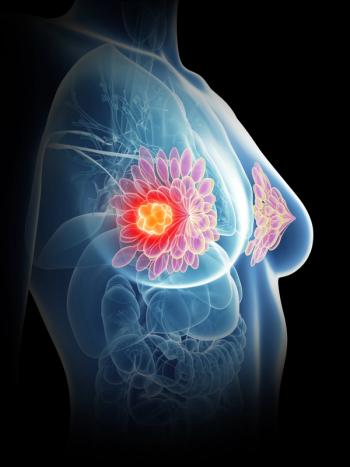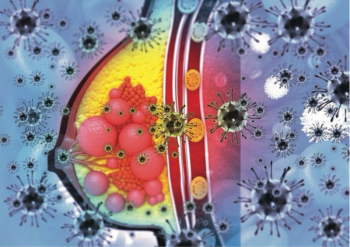
Oncology NEWS International
- Oncology NEWS International Vol 7 No 8
- Volume 7
- Issue 8
Paclitaxel Shows Antiangiogenesis Effects in Mouse Model
LOS ANGELES--Although a number of new angiogenesis inhibitors are under development, researchers reported at an ASCO poster session that an established anticancer agent may also have antiangiogenesis properties.
LOS ANGELES--Although a number of new angiogenesis inhibitors are under development, researchers reported at an ASCO poster session that an established anticancer agent may also have antiangiogenesis properties.
Derick H. Lau, MD, PhD, and his colleagues at the University of California, Davis, found that paclitaxel (Taxol) is able to block angiogenesis and that this function is independent of the drugs antiproliferative properties. This suggests that paclitaxel might help prevent metastasis by blocking the growth of new blood vessels needed by growing tumors.
Dr. Lau and his associates studied the angiogenesis effect by implanting a highly vascularized murine breast carcinoma into nude mice. "This is a good model for metastatic human disease," Dr. Lau said. "In these animals, 90% of tumors will metastasize to the lung in 50 days."
Paclitaxel, at doses of 0, 3, and 6 mg/kg/d, was administered intraperitoneally for 5 days to three groups of four animals per group. Tumor growth was measured every 2 days. Eight days after the last dose of paclitaxel, microcirculation of the tumor was studied with computer-assisted intravital microscopy. Microvessel density was determined with alpha-actin immunostaining under light microscopy.
The implanted tumors grew at the same rate in all groups, with a doubling time of 7 days in each group (P > .05). However, Dr. Lau reported that the intratumoral tortuosity index of the microcirculation was significantly reduced in the paclitaxel-treated animals, compared with controls (P < .05). Similarly, the animals treated with paclitaxel had microvessel density significantly lower than controls.
Vessel density decreased in a dose-related manner: From 33 per high-power microscopic field with no paclitaxel, to 17 with a 3 mg/kg dose, to 11 with a 6 mg/kg dose (P < .05).
"We conclude that paclitaxel possesses an antiangiogenesis property in breast cancer independent of its antiproliferative action," Dr. Lau said. "The next step will be to see if by decreasing microvascular density, we can decrease metastasis."
Articles in this issue
over 27 years ago
Taxol, Gemzar, Other Therapies Studied in Metastatic Bladder Cancerover 27 years ago
Medicare+Choice Opens Certificationover 27 years ago
Consumer Advocates Win a Voice in NCI Programsover 27 years ago
Henney Nominated for FDA Commissionerover 27 years ago
FDA Approves ImageChecker Computer Systemover 27 years ago
Pittsburgh Seeks Breast Cancer Patients for Study on Copingover 27 years ago
Octreotide Imaging Improves Staging of Hodgkin’s Diseaseover 27 years ago
Tobacco Contributions Are Linked to Votes Against Tobacco Billover 27 years ago
Long-Term Treatment Issues Surface at AIDS MeetingNewsletter
Stay up to date on recent advances in the multidisciplinary approach to cancer.

















































































